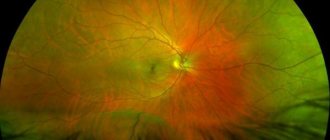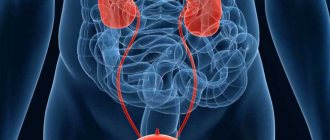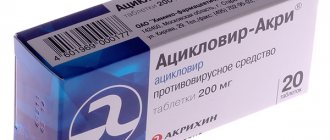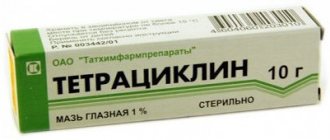Ibuprofen is now one of the most famous and popular non-steroidal anti-inflammatory drugs in the world. It has pronounced analgesic, anti-inflammatory and antipyretic activity. The mechanism of action of ibuprofen is based on inhibition of prostaglandin biosynthesis at the central and peripheral levels. The mechanism of action and safety profile of ibuprofen have been well studied, and its effectiveness has been clinically proven. Therefore, WHO included this drug in its List of Essential Medicines. The choice of ibuprofen by patients in different countries is due to the fact that it has a minimal number of side effects compared to other NSAIDs, is less irritating to the stomach, and the subjective assessment of its use is much better than that of other drugs.
In 1962, ibuprofen was registered by the British Patent Office under the brand name Brufen , and just seven years later it was approved as a prescription drug for the treatment of rheumatoid arthritis. Since 1974, ibuprofen has been available in the United States as a pain reliever and antipyretic drug under the Motrin brand. It became available over-the-counter for the first time in 1983 in its homeland in the UK. The commercial success of ibuprofen was truly amazing - by the end of 1985, more than 100 million people in the world were using this drug.
Incredibly, more than 20,000 tons of ibuprofen are currently produced worldwide each year. Today, not a single home medicine cabinet is complete without it. It is produced under various names by many global and local pharmaceutical companies. Ibuprofen is available over the counter and is used for fever, headaches, earaches, toothaches, backaches, painful periods and other conditions in more than 120 countries. There are various dosage forms of the drug in the form of tablets, dragees, capsules, gels and ointments, including liquid forms intended specifically for children. ( watch detailed presentation )
At the beginning of the COVID19 epidemic, many rumors arose regarding the safety of using ibuprofen for this disease , linking it with worsening symptoms and even death. Let's see if this is true.
It all started in March 2021, when French Minister of Solidarity and Health Oliver Veran tweeted that taking anti-inflammatory drugs (such as ibuprofen or cortisone) could be a factor in exacerbating COVID-19. Instead, paracetamol was recommended to treat associated fever.
A huge number of reports appeared on the Internet that people in serious condition were admitted to hospitals in different countries, allegedly taking ibuprofen for fever and cough. However, the hospitals mentioned denied this information . One of the reports, for example, said that some experts at the University of Vienna claimed that ibuprofen creates a favorable environment in the body for the reproduction of the COVID-19 virus , which, in turn, led to a disaster in Italy. Upon further investigation, it turned out that such a laboratory and experts simply did not exist.
Surprisingly, even respected medical organizations succumbed to the influence of unverified information and, one after another, issued similar recommendations. WHO has not recommended taking ibuprofen without a doctor's advice if you suspect you have COVID-19. The NHS (National Health Service) in the UK recommended taking only paracetamol for symptoms of COVID-19, although it acknowledged that there was no convincing evidence that ibuprofen worsens symptoms. Even a major medical publication like the BMJ has also stated that ibuprofen should be avoided when treating COVID-19 symptoms.
On what could such statements be based?
In May 2021, the EMA Pharmacovigilance Risk Assessment Committee (PRAC) published a review of ibuprofen and ketoprofen following a survey by the French Agency for the Safety of Medicines and Health Products (ANSM), which indicated that the course of chickenpox and some other bacterial infections may be worsened by these medications. However, the instructions for medical use of NSAIDs already contain warnings that the anti-inflammatory effects of these drugs may hide the symptoms of exacerbation of infection.
The Lancet, one of the oldest and most respected medical journals, published a letter on March 11, 2021, which suggested that some anti-inflammatory drugs, such as ibuprofen, may increase the risk of complications of coronavirus infection by stimulating the rise of ACE-2. This letter caused a lively discussion, as it was not supported by any facts. Further research completely refuted it. This letter has now been withdrawn from the journal.
A little later, the European Medicines Agency EMA expressed its position. “ There is currently no scientific evidence linking ibuprofen to worsening health in patients with COVID-19. The EMA is closely monitoring the situation and will consider any new information that becomes available on this issue in the context of the pandemic. When initiating treatment for patients with COVID-19, healthcare providers should consider all available treatment options, including paracetamol and non-steroidal anti-inflammatory drugs, to reduce fever and pain. In accordance with EU national treatment guidelines, patients and healthcare professionals can continue to use non-steroidal anti-inflammatory drugs (such as ibuprofen) as prescribed. There is currently no reason for patients taking ibuprofen to interrupt their treatment based on the above. This is especially important for patients taking ibuprofen or other non-steroidal anti-inflammatory drugs to treat chronic conditions."
On March 19, 2021, the WHO stated a sudden change of position: " WHO is consulting with physicians treating patients with COVID-19 and is not aware of any reports of any negative effects of ibuprofen , other than the usual known side effects that limit it use in certain populations."
The Commission on Human Medicines Coronavirus (COVID-19) Expert Working Group concluded on 14 April 2021 that there is currently insufficient evidence to establish an association between the use of ibuprofen or other NSAIDs and worsening coronavirus infection . “Patients can take paracetamol or ibuprofen to self-treat COVID-19 symptoms such as fever and headache.”
The US Food and Drug Administration (FDA) also said it has no scientific evidence linking the use of NSAIDs such as ibuprofen to worsening COVID-19 symptoms.
ASA - acetylsalicylic acid
Gastrointestinal tract - gastrointestinal tract
IHD - coronary heart disease
LS - medicines
NSAIDs - non-steroidal anti-inflammatory drugs
COX - cyclooxygenase
PG - prostaglandin
TxA2 - thromboxane
It is difficult to imagine modern clinical practice without the use of various nonsteroidal anti-inflammatory drugs (NSAIDs). In Ancient Greece, more than 3.5 thousand years ago, Hippocrates used willow bark extract as an antipyretic and analgesic. Much later, in the 17th century, a substance was isolated from it, which was called salicylic acid (from the Latin salix - willow). At the end of the 19th century, the production of salicylic acid and acetylsalicylic acid (ASA) began in Germany. Currently, more than 20 different representatives of this group are known in clinical practice, differing in chemical structure, features of the mechanism of action, indications for use and tolerability.
Mechanism of action of NSAIDs.
NSAIDs inhibit the synthesis of prostaglandins (PGs), which are important physiological and pathological mediators.
PGs are involved in processes such as pain, inflammation, tumorigenesis, osteoporosis, regulation of body temperature (hyperthermia) and kidney function, etc. From arachidonic acid, with the participation of the enzyme cyclooxygenase (COX), PGH2 is formed, which is the precursor of PGs such as thromboxane (TxA2), prostacyclin, or PGI2, D2, E2 and F2 (see figure).
Figure 1. Mechanism of action of NSAIDs [2, 3]. Two main isoforms of COX are known: COX-1 and COX-2. The issue of isolating the third isoform, COX-3, as a variant of COX-1 under experimental conditions, remains unresolved [1]. The first isoform (COX-1) is synthesized constantly and works according to a universal mechanism, i.e. regardless of in which organ or tissue the synthesis occurs. The synthesis of the second isoform (COX-2) is stimulated by various inflammatory factors (lipopolysaccharides, interleukins, tumor necrosis factor α) in various cells of the human body, such as endothelium, osteoclasts, synoviocytes, monocytes and macrophages [2].
The main pharmacodynamic properties of NSAIDs - anti-inflammatory, antipyretic and analgesic effects - are achieved through inhibition of COX-1 and COX-2. It is the inhibition of COX-1 and COX-2 that causes the main adverse reactions associated with the use of NSAIDs. Prostaglandins PGE2 and PGI2, which are synthesized with the participation of COX-1 in the gastrointestinal tract (GIT), are cytoprotectors of the mucous membrane by reducing the secretion of hydrochloric acid by parietal cells of the stomach, improving blood flow and stimulating mucus production. In addition, with the participation of COX-1, TxA2 is synthesized in platelets, which have vasoconstrictive and proaggregant properties. NSAIDs, by blocking the synthesis of COX-1, can lead to damage to the mucous membrane of the stomach and intestines and disruption of platelet aggregation. Thus, NSAIDs increase the risk of developing severe gastrointestinal diseases such as inflammation, bleeding and penetration of the stomach or intestines. The risk of developing such complications is higher in older people and does not depend on the duration of drug use [4].
The classification of NSAIDs is presented in table. 1.
Among representatives of NSAIDs, there are differences in the chemical structure, features of action and the degree of inhibition of COX-1 and COX-2.
The selectivity of NSAIDs for COX isoforms is usually assessed by the ratio of the degree of inhibition of COX-1 to COX-2 (selectivity coefficient). Selective COX-2 inhibitors are those NSAIDs that have this coefficient of more than 5, highly selective inhibitors - if this coefficient is more than 50 (see Table 1)
. NSAIDs with high selectivity for COX-2 are called coxibs (from the English - cyclo-oxygenase, abbreviated version of COX).
Clinical pharmacology of ibuprofen.
One of the NSAIDs widely used in clinical practice is ibuprofen, which was synthesized by S. Adams and D. Nicholson in Great Britain in 1962. In the Russian Federation it is registered under the trade name Nurofen (original drug). It has pronounced anti-inflammatory, analgesic and antipyretic effects, which, combined with good tolerability, predictability of side effects and low risk of complications, has led to its widespread use in clinical practice.
According to the chemical structure, ibuprofen is a derivative of propionic acid; according to the mechanism of action, it is a non-selective inhibitor of COX-1 and COX-2, lipoxygenase involved in the synthesis of pro-inflammatory leukotrienes [6].
Ibuprofen is a racemic mixture of two optical left- and right-handed isomers, the S (+) and R (–) enantiomers. The clinical effectiveness of ibuprofen is mainly due to the action of the S (+) form, but the presence of the R (–) isomer explains some of the anti-inflammatory properties of ibuprofen [7].
Variety of dosage forms of ibuprofen.
Modern possibilities for the use of ibuprofen are associated with advances in the field of pathophysiology of diseases and the development of new dosage forms of this drug. Currently, ibuprofen is presented in a variety of dosage forms on the drug market.
Not only oral administration of ibuprofen is possible, but also its topical use in the form of a gel, rectal (in the form of suppositories) and parenteral (in the form of solutions for intravenous administration) (Table 2).
Modern technologies have made it possible to develop new dosage forms - capsules containing ibuprofen solution (Nurofen Ultracap) and ibuprofen derivatives - sodium dihydrate and lysinate. The advantages of the lysine salt of ibuprofen are the speed of dissolution of this compound, increased bioavailability and the speed of onset of maximum concentration in the blood plasma (Nurofen Express) [8-10].
In clinical practice, new dosage forms with modified release are also presented, i.e. with a mechanism and nature of release of the drug substance changed in relation to the usual form. Forms of ibuprofen are known as immediate release (IR) and sustained release (SR).
Pharmacokinetics of ibuprofen.
The main pharmacokinetic parameters of ibuprofen, in particular the concentration of enantiomers in plasma or the area under the pharmacokinetic curve, depend on the dosage form and dose of ibuprofen
(see Table 2)
.
When taken orally, ibuprofen is rapidly absorbed from the upper small intestine. The bioavailability of ibuprofen as a weak acid when taken orally averages 80%. Eating generally reduces the rate of absorption of ibuprofen, but certain foods and drinks (eg, Coca-Cola) have been shown to increase the rate of absorption. The time to reach the maximum concentration of ibuprofen isomers in plasma or serum averages 1-2 hours and depends on the dosage form of ibuprofen (see Table 2)
. Based on the rate of absorption, dosage forms of ibuprofen can be distributed in ascending order: ibuprofen tablets → ibuprofen suspension → ibuprofen solution. Rapid absorption of ibuprofen from liquid forms (suspension, solution) provides a faster analgesic and antipyretic effect.
After oral administration of 40-60% of the R (-) form, ibuprofen is metabolized in the intestines and liver into the S (+) form. Further biotransformation of ibuprofen takes place in 2 phases. I - phase of oxidative reactions is associated with a system of microsomal enzymes of cytochrome P-450 (2C9, 2C8 and 2C19), which ensure the formation of inactive carboxyl and phenolic compounds. Differences in genotypes of the P-450 2C9 system lead to differences in the metabolism of ibuprofen, an increase in the area under the pharmacokinetic curve and changes in hepatic clearance [7]. Phase II of ibuprofen metabolism includes the formation of inactive glucuronic and taurine compounds, which are subsequently excreted primarily through the kidneys. Impaired liver function due to liver cirrhosis leads to a slower inversion of the R (–) form of ibuprofen to the S form (+), as well as an increase in half-life to 3.4 hours. Impaired renal function also reduces the rate of elimination of ibuprofen metabolites.
Ibuprofen has a high degree of binding to plasma albumin (90-99%). In adults, ibuprofen, when taken orally and intravenously, has a short half-life of about 2 hours. Ibuprofen penetrates well into the synovial fluid of inflamed joints, which provides analgesic and anti-inflammatory effects. The antipyretic effect of ibuprofen is due to inhibition of PGE2 synthesis in the central nervous system. Ibuprofen is a lipophilic substance, but only its free (not bound to albumin) fraction penetrates the blood-brain barrier.
With topical application of ibuprofen, there is a slight decrease in the systemic bioavailability of the drug to 14-30% of that when taken orally [12], while after topical application, higher concentrations are observed in subcutaneous and soft tissues, including muscle [13]. A number of studies in patients of different categories have shown that the effectiveness of topical application of ibuprofen (5% gel) and ibuprofen (1200 mg/day) taken orally both for acute traumatic injuries of soft tissues and for chronic pain syndrome is the same, and the tolerability of topical forms is better [12, 14, 15].
The pharmacokinetic curve indicators for rectal use are comparable to the pharmacokinetic data for oral administration of the drug. Absorption during rectal administration of ibuprofen is characterized by a high degree of bioavailability and rapid onset of maximum plasma concentration. In addition, the peculiarities of the blood supply to the rectal area lead to the fact that only part of the drug is metabolized in the liver, which leads to an increase in the half-life.
Pharmacokinetics indicators do not differ significantly between men and women, and in different age groups. Pharmacokinetic parameters in children over 2 years of age and adolescents do not differ from those in adults. The only exceptions are children under 2 years of age, whose metabolism of ibuprofen is significantly lower than that of adults, which requires the correct dosage regimen of the drug depending on the child’s body weight. With increasing age, there is a slight increase in half-life, which reflects age-related changes in metabolism and clearance, however, in older people, the elimination of ibuprofen does not undergo significant changes.
Safety of ibuprofen.
The development of selective COX-2 inhibitors was aimed at overcoming the limitations of the use of NSAIDs due to the risk of developing adverse gastrointestinal reactions. However, during the introduction of coxibs into clinical practice, another safety problem arose with long-term use - an increased risk of developing cardiovascular thrombotic complications, myocardial infarction and stroke [16]. The increase in the risk of thrombotic complications in the presence of selective COX-2 inhibitors is based on an imbalance between thromboxane and prostacyclin, which regulate endothelial function and platelet aggregation. Selective coxibs, due to the selective blockade of COX-2, upset the balance between the levels of thromboxane and prostacyclin, which is the basis for the development of thrombotic complications [2]. However, the results of subsequent clinical observations showed that the use of non-selective NSAIDs also increases the risk of developing cardiovascular complications [17, 18]. Current international recommendations, based on the results of long-term clinical studies, limit the use of both coxibs and non-selective NSAIDs in patients with coronary heart disease (CHD), stroke, or at high risk of developing CHD [3, 5].
Another undesirable reaction due to long-term use of NSAIDs is impaired renal function, since both COX isoforms play a significant role in the regulation of kidney function. PGs regulate vascular tone and maintain normal blood flow, which is necessary to maintain normal kidney function. It is now known that inhibition of COX-1 leads to a decrease in glomerular filtration rate, and inhibition of COX-2 slows down sodium reabsorption in healthy volunteers and elderly people. According to a meta-analysis, selective COX-2 inhibitors increase the risk of developing renal failure and arrhythmia [2, 19].
Ibuprofen has an extensive evidence base for safety, due to which it is available over-the-counter (in dosages less than 1200 mg) in many countries around the world.
The safety of ibuprofen has been demonstrated in many large clinical studies. Of greatest interest is a multicenter randomized study conducted in 1999 in France with the participation of 8677 patients (PAIN study), the purpose of which was to compare the effectiveness and tolerability of over-the-counter analgesics: ASA, paracetamol and ibuprofen. It has been shown that ibuprofen (at a dose of less than 1200 mg) is tolerated as well as paracetamol, which was previously considered the standard of safety, and compared to ASA, it causes a significantly lower incidence of adverse reactions [20].
When comparing the frequency of adverse gastrointestinal reactions, it was noted that ibuprofen is characterized by high safety due to the presence of a low-active enantiomer R, which competes with the active form S for the active center of COX-1, which is responsible for the synthesis of PGs, which provide protection to the gastrointestinal mucosa. In addition, the short half-life of ibuprofen may also provide safety advantages for this drug.
Ibuprofen does not form toxic metabolites, its toxicity after accidental or intentional overdose is lower and it has a relatively higher therapeutic index (about 4 times higher than paracetamol). The development of Reye's syndrome (acute hepatic encephalopathy in children while taking ASA) is also uncharacteristic of ibuprofen [14, 21].
Clinical effectiveness of ibuprofen.
Ibuprofen is an effective analgesic for acute pain syndrome of various origins. At a dose of 400 mg, it has repeatedly proven its advantage over placebo in postoperative, toothache, sore throat, dysmenorrhea, tension headaches and migraines, soft tissue trauma, neuralgia and myalgia, as well as a number of other conditions accompanied by severe pain.
For headaches, ibuprofen as a first-line drug is included in the list of analgesics recommended by WHO, as well as the European Federation of Neurological Societies (EFNS) for the treatment of mild to moderate migraine attacks (class A) [22, 23]. The effectiveness of ibuprofen in the treatment of cephalgia has been proven in many placebo-controlled clinical trials, as well as several meta-analyses, including in children and adolescents [24-28].
At a dose of 200-400 mg, ibuprofen is the “gold standard” for the treatment of moderate pain in people with postoperative dental pain [29]. A meta-analysis demonstrated the high effectiveness of ibuprofen compared with placebo across 72 studies. Ibuprofen significantly reduced pain in all patients - by at least 50% for an average of 4.7 hours. Repeated analgesia was required in only 48% of patients taking ibuprofen at a dose of 200 mg, and in 42% - at a dose of 400 mg [30] . Another meta-analysis based on 33 studies found an advantage of ibuprofen (400 mg) in relieving pain after tooth extraction compared to paracetamol (1000 mg), as well as a combination of paracetamol (600-650 mg) and codeine (60 mg) [31].
The issue of choosing an effective and safe NSAID in pediatric practice is especially acute, due to the fact that fever and pain are leading in a number of diseases, including respiratory infections, which are most common in young children. Large multicenter randomized studies have shown that among all analgesic-antipyretic drugs, ibuprofen and paracetamol are the safest drugs. Thus, a meta-analysis combining 24 randomized and 12 observational studies from 1950 to 2008 did not show statistically significant differences in the incidence of adverse reactions of the gastrointestinal tract and kidneys, as well as in the effect on the course of bronchial asthma when taking ibuprofen, paracetamol and placebo [32]. The largest systematic review of data on the effectiveness and safety of ibuprofen compared with paracetamol in the treatment of fever and pain in children and adults was conducted in 2010. It included 85, including large randomized trials in the period 2008-2009. The authors concluded conclusion that ibuprofen is more effective than paracetamol in the treatment of fever and pain in all age groups with equal safety [33].
According to WHO recommendations, ibuprofen at a dose of 5-10 mg/kg, along with paracetamol, is the drug of choice as an antipyretic and analgesic (for mild to moderate pain) in children from 3 months. No other NSAIDs can be recommended for use in pediatric practice due to the lack of the necessary evidence base for their effectiveness and safety [34, 35].
Currently, ibuprofen is also the only drug listed by the WHO for the treatment of patent ductus arteriosus in newborns [36]. Potential new indications for the use of ibuprofen are being studied.
Cystic fibrosis.
Several clinical studies have demonstrated the effect of ibuprofen on slowing the progression of the pulmonary process (slowing the decline in forced expiratory volume in 1 second) in patients with cystic fibrosis with long-term use in various age groups [37-39]. The results obtained are likely due to a decrease in the influx of polymorphonuclear cells into the lungs and, consequently, the inflammatory process [40]. Despite the fact that large doses of ibuprofen were used, the risk of developing adverse gastrointestinal reactions remained low [37, 38].
Parkinson's disease.
It is believed that one of the key links in the pathogenesis of Parkinson's disease is neuroinflammation. Based on this assumption, several studies have been conducted to determine the role of NSAIDs in the development of the disease. A 2010 meta-analysis of 7 large epidemiological studies demonstrated a reduction in the risk of developing Parkinson's disease by 15% in the overall group of patients taking NSAIDs, and by 29 and 21%, respectively, with regular and long-term use of NSAIDs. The strongest neuroprotective effect was observed with ibuprofen, which was confirmed by a number of other studies [41–43].
Mammary cancer.
Currently, there is great interest in the positive effects of NSAIDs, primarily ASA and ibuprofen, on the risk of developing various types of cancer [44–46]. Based on the results of a meta-analysis (38 studies, n=2,788,715), conclusions were drawn about the possible oncoprotective effect of NSAIDs, primarily ibuprofen (relative risk 0.79 with a 95% confidence interval from 0.64 to 0.97) in relation to the development of breast cancer [ 47]. Another meta-analysis (26 studies, n=528,705) showed similar results [48]. Perhaps, after large placebo-controlled studies, the use of ibuprofen will be recommended as a preventive measure for cancer.
Thus, when prescribing therapy, it is important to choose a time-tested remedy. More than 40 years of experience with the use of ibuprofen in widespread clinical practice in almost 80 countries as an over-the-counter drug is a clear example of its effectiveness and safety [49].











